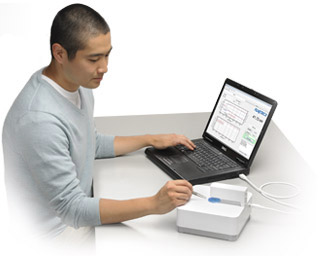What We Measure
By Spectral Reflectance | By Optical Profilometry
By Spectral Reflectance

Material: We can measure all at-least-partially-transparent films, plus all semiconductors (transparent or not). The measured film must be at least somewhat shiny in appearance.
Thickness range: The range of thicknesses that our products can measure is somewhat material dependent, but here is a rough guide:
| Units | Thickness Range | |
|---|---|---|
| Minimum | Maximum | |
| Å | 10 | 10^8 |
| nm | 1 | 10^7 |
| kÅ | 0.01 | 10^5 |
| µm | 0.001 | 10000 |
| µm-in | 0.04 | 40^4 |
| mils | 0.00004 | 400 |
| mm | 10^-6 | 10 |
| g/cm^2 | 10^-7 | 1 |
Refractive index can be measured for films greater than 10nm thick (again, this is material dependent).
Number of layers: We can usually measure up to three individual films in a stack. In some circumstances, we can measure dozens of layers.
Substrate material: If the film is on a rough substrate (which includes most metals), generally the film's refractive index cannot be measured. In addition, rough substrates limit the minimum measurable film thickness to about 50nm.
Required information: We must know the ordering, identity, and nominal thickness of all films present, whether they are to be measured or not.
By Optical Profilometry
Our Profilm3D optical profiler measures surface roughness, surface topography, and step heights in the range of 0.1 nm to 10 mm. Virtually any material can be measured. The step-height measurement function is ideal for measuring the thickness of opaque materials, such as metals. Click here to learn more!
Contact our thin-film experts to discuss your film thickness measurement needs.
Filmetrics offers Free Trial Measurements - results are typically available in 1-2 days.
Contact Us Now
Contact Us Now
Video Tutorial

Learn about the importance of thin films with our animated short film, or see how easy it is to set up and use a Filmetrics system.
More…
